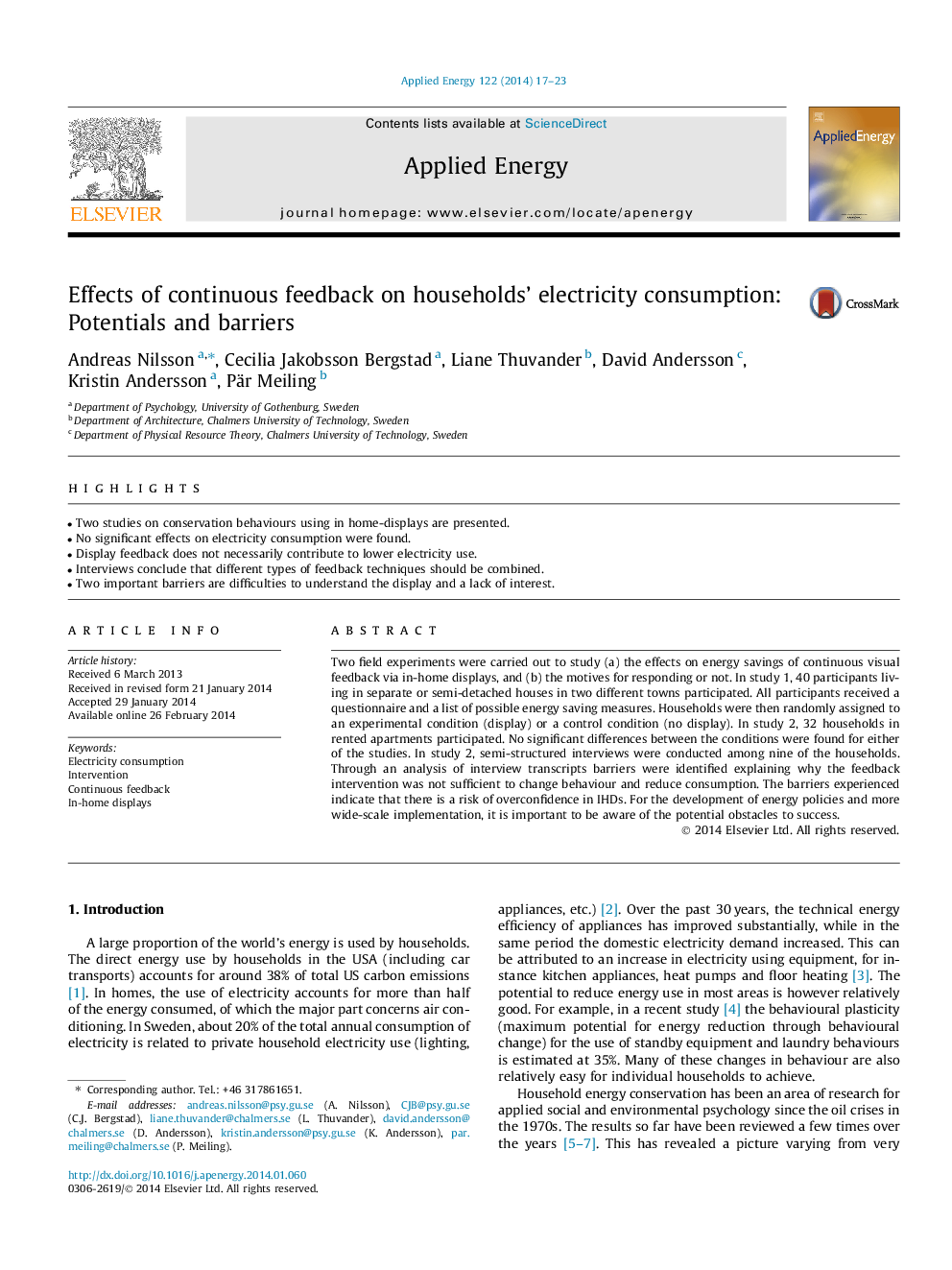| Article ID | Journal | Published Year | Pages | File Type |
|---|---|---|---|---|
| 6690432 | Applied Energy | 2014 | 7 Pages |
Abstract
Two field experiments were carried out to study (a) the effects on energy savings of continuous visual feedback via in-home displays, and (b) the motives for responding or not. In study 1, 40 participants living in separate or semi-detached houses in two different towns participated. All participants received a questionnaire and a list of possible energy saving measures. Households were then randomly assigned to an experimental condition (display) or a control condition (no display). In study 2, 32 households in rented apartments participated. No significant differences between the conditions were found for either of the studies. In study 2, semi-structured interviews were conducted among nine of the households. Through an analysis of interview transcripts barriers were identified explaining why the feedback intervention was not sufficient to change behaviour and reduce consumption. The barriers experienced indicate that there is a risk of overconfidence in IHDs. For the development of energy policies and more wide-scale implementation, it is important to be aware of the potential obstacles to success.
Related Topics
Physical Sciences and Engineering
Energy
Energy Engineering and Power Technology
Authors
Andreas Nilsson, Cecilia Jakobsson Bergstad, Liane Thuvander, David Andersson, Kristin Andersson, Pär Meiling,
